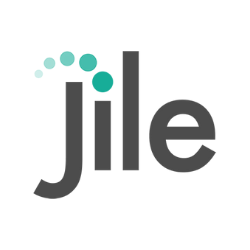Agile Project Management: All you need to know

Agile Project Management - A Brief Overview
Projects are at the core of any business, irrespective of the industry vertical, expertise, and key offerings. Successful project management, thus, becomes highly essential for businesses to ride the success and growth curve while delivering consistent, contextual, and comprehensive customer experiences. However, in the current times where teams have resorted to remote working, and communicate mostly through online communication modes, managing projects from a holistic standpoint can be daunting.
Agile project management, fuelled by cutting-edge tech solutions, is the need of the hour for businesses to stay competitive at all times. It is an iterative approach towards projects, especially from the software development sphere, which paves the way for a quick feedback response time. Categorically dividing projects into shorter cycles, referred to as sprints, and collecting, and acting on feedback in real-time in an agile manner is at the core of agile management of development projects.
"In this blog, we will cover the roots of agile management
or
Agile Portfolio
Management, agile project management tools, the key agile
frameworks, methodologies, and best practices..
Also, You will get to Know why Jile is a Perfect
Agile Project Management Software for Your
Organization"
History of Agile Project Management
If we talk about agile vs waterfall project management models, agile will be the go-to option for today's businesses, and rightfully so. Pitfalls associated with waterfall project management such as lack of autonomy, flexibility, and adaptability have fuelled the increased acceptance and adoption of agile frameworks and methodologies. Though the thought took place around the 1990s, the agile manifesto, the collection of agile values, and principles, came into light in 2001.
The 4 core values of agile that hold significant value in today's time:
- More emphasis is put on individuals and interactions in a project management plan rather than tools
- Working products than comprehensive, heavy documentation
- Customer collaboration and success is the key
- Responding to changes on the go than strictly following a plan, which might derogate customer expectations and experiences
Agile Frameworks, Practices, and Methodologies
Now that you have a fair understanding of what the agile approach to project management is, let's learn more about the frameworks, best practices involved, and methodologies that are adapted to make software development accessible, scalable, smart, secure, and resilient.
Agile Best Practices
- The highest priority is to satisfy the customer through on-time delivery and continuous feature and functionality improvement of valuable software.
- Changes, feedback and suggestions for further improvement are common and constant in software development phases. Welcoming changes to achieve perfection is an agile principle, which aims at harnessing change for customer success and competitive advantage.
- Working software must be delivered frequently, and within shorter timelines to incorporate feedback and changes better.
- More communication and collaboration among the project team members such as team leads, Agile developers, Agile testers, and QA professionals.
- An agile principle is to offer a value-driven and constructive environment for project team members
- Promoting sustainable development
- Continuous attention to technical excellence
Agile Methodologies
Agile methodologies are all about using detailed and contextual understanding, continuous planning, effective communication to pave the way for on-time, and efficient product development, and delivery. Agile methodologies emphasise dividing the entire project into smaller sprints that allow the feedback loop closure, real-time improvements, which lead to greater customer satisfaction. Agile processes allow the software development and testing teams to work in parallel, and in a collaborative manner to release error-free, robust, and smart software products for the end customers.
Considering the wide-scale popularity and demand for agile methodologies, you will find a plethora of options at your disposal. Here, we will cover some of the proven, time-tested agile project management methodologies that are, and will remain in trend for the foreseeable future.
Scrum
If you have a very demanding client with iterative project expectations, Scrum is the agile project management methodology for you. It allows you and your teams to get more work done faster. This lightweight agile framework helps project management teams generate value that's going to be translated into positive business benefits. Transparency, quality, flexibility, and motivation are the key factors that enable teams to perform and deliver premium products faster with scrum project mangement software.
Kanban
Kanban, the Japanese term, signifies a sign or vision or visual board. Kanban is an agile project management methodology that emphasises enabling project teams to attain greater visibility of the workflow. This allows teams to have clarity on the current state of project functionality, timelines, customer expectations, and to plan for better deliverability, and success. Project teams can also limit the running processes at a moment to have a greater focus on delivery, feedback, change, and continuous improvement with Kanban project management software.
Extreme Programming
Team collaboration, effective communication, constant development, happy project teams, and customers are some of the business benefits that make extreme programming agile project management methodology widely adaptable. In extreme programming methodology, codes are simple, and testing happens in a continuous manner to keep the software products bug-free.
Lean Development
This agile methodology focuses on reducing redundant tasks, which further leads to optimal utilization of resources and perfection. The core intent is to ideate, and develop a fail-proof workflow, which gets better with time. High scalability is what makes lean the favourite agile methodology for businesses.
Crystal
This is a group of agile methodologies that focuses on frequent deliveries to identify problems, process perfection, and agile communication.
Dynamic Systems Development Method (DSDM), and Feature-driven Development (FDD) are the other key agile methodologies.
Final Thoughts
Agile project management tools are indispensable for businesses to drive improved customer satisfaction, performance visibility, project predictability, reduce risks, and ensure optimal product quality. Jile is an efficient agile project management software that can be leveraged to do everything better, and faster.
Got more queries? Do connect for Jile free subsription!
Thanks for subscribing to our latest blogs, thought leadership and other product updates!
Read our Privacy Notice to know more. You can opt-out of all communications anytime.
